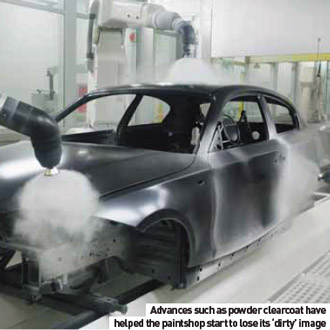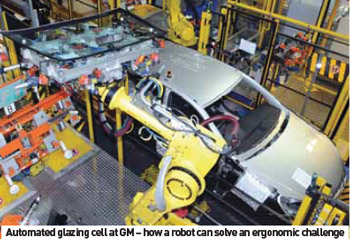
AMS magazine is 10 years old this year. During this time, it has reported on some of the most exciting - and turbulent - times in car making’s history
- Nano – a car for everyman
- How globalization really panned out
- Quality expectations
- Written on the body
- In the eye of the beholder
- Powertrain – testing times
- From start to finish – paintshop advances
- Putting it all together– trim and final assembly
- Management, labour and the unions
- Tough times ahead, tough solutions
10 years, quite neatly about one-tenth of the history of automotive mass production. What an extraordinary decade this has been. We have learned a lot while charting the automotive industry over the past 10 years – and even sometimes enjoyed positive reader comments - we thought it better to ask some of our contacts in the industry to tell us their experiences and observations on a decade that has seen more change in car making than any that has come before.
The past 10 years has been especially significant in manufacturing location terms. As developing nations have grown in economic stature and wealth has filtered down to new segments of the population, so demand for vehicles from both indigenous carmakers and foreign manufacturers has increased dramatically. The so-called BRIC countries, Brazil, Russia, India and China, have all seen major increases in their ‘middle classes’; a growing demographic who, previously reliant on inefficient public transport systems, two-wheeled vehicles or even horsedrawn carts, would now be able to become part of the car-owning class.
While there had been slow but steady growth in vehicle sales, it was the launch of the Tato Nano that heralded the start of a dynamic shift towards four-wheeled transportation.
Billed as the world’s cheapest car, the Nano was set to cost just $1,979; with deliveries starting in July 2009.
Tata hoped the three-metre long, five-seat car would be cheap enough to encourage millions of Indians to trade up from their motorcycles.
Tata owner Ratan Tata said at the time: "I think we are at the gates of offering a new form of transport to the people of India and later, I hope, other markets elsewhere in the world.” A slightly bigger European version, the Nano Europa is due to follow in 2011, and is expected to cost nearer £4,000.
Building greenfield plants for the new car in India proved to be problematic. Tata had to abandon plans to build the Nano in a new plant in the eastern state of West Bengal due to farmers contesting ownership of the land on which the plant was built. This caused the launch of the Nano to be put back by six months.
Now, the main Nano factory is in the western state of Gujarat; a plant that will build 250,000 cars a year, though will not open until 2010. In the meantime, Tata will build a reduced number of Nanos, about 50,000, with production spread between its existing plants.
Whether the Nano points the way forward for more OEMs’ product plans remains to be seen. Other low-priced vehicles have been launched with varying degrees of success by Renault (Logan, in Europe), GM (Celta, in South America); there are examples in most major regions, vehicles with either reduced specification or models based on adapted ‘western’ ranges, made either under licence or through joint ventures in developing regions.
How globalization really panned out
From the 1980s to early 2000s, the global spread of vehicle making was one of the hottest topics with almost any OEM; before the current economic downturn it was expected by many that the industry would aggressively grow, spreading production to every country in the world. It has not quite worked out like that. As regions have demanded more vehicles, so local carmakers have risen to the challenge.
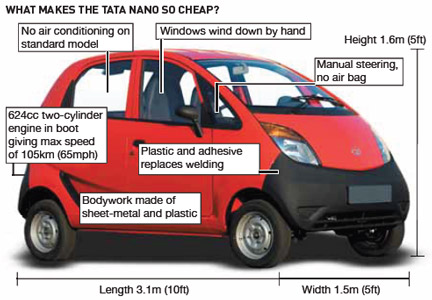 For example, there are thought to be more than 1,000 carmakers in China alone, many producing poor-quality, reverse-engineered copies of ‘western’ vehicles, or others like SAIC’s Roewe, making run-out models bought from ‘first-world’ OEMs.
For example, there are thought to be more than 1,000 carmakers in China alone, many producing poor-quality, reverse-engineered copies of ‘western’ vehicles, or others like SAIC’s Roewe, making run-out models bought from ‘first-world’ OEMs.
For the big western carmakers, the decade has seen a shift in strategy.
These companies have gone from creating region-specific platforms to pushing adaptable global vehicle architectures, in order to benefit from economies of scale.
GM’s Gary Cowger: “10 years ago, the GM Manufacturing Footprint was made up of plants operated by independent business units within GM, across multiple regions of the world.
These plants were predominately building products off of regional platforms, for local markets. Today, our global manufacturing footprint is a global network of plants, building products off of global architectures, with a common bill of process, and using our global manufacturing system. These plants serve multiple markets, resulting in lower investment, lower structural cost, reduced lead time, and higher plant utilization.”
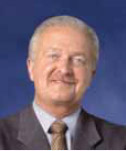 Prior to his current position, Cowger was president of General Motors North America. He began his GM career in 1965, becoming production/manufacturing manager of various divisions, president and managing director of GM de México, and was elected a GM V-P in October 1994. He was named manufacturing V-P for GM Europe in 1998, then chairman and managing director of Adam Opel in Germany. Later that same year, he became group V-P of labour relations for GM North America and then group V-P of manufacturing and labour relations, in 2001.
Prior to his current position, Cowger was president of General Motors North America. He began his GM career in 1965, becoming production/manufacturing manager of various divisions, president and managing director of GM de México, and was elected a GM V-P in October 1994. He was named manufacturing V-P for GM Europe in 1998, then chairman and managing director of Adam Opel in Germany. Later that same year, he became group V-P of labour relations for GM North America and then group V-P of manufacturing and labour relations, in 2001.
The balance of manual operations and automation– what is your view? In the past, we may have turned to technology as our primary approach, but today we are looking for lean solutions. These are best accomplished through an integration of technology and our human systems. After all, in many ways human beings provide the most fl exible, lowest cost solution available. Our challenge is to fi nd the “sweet spot” between technology, capital, and operating costs while maintaining manufacturing fl exibility and meeting ever-demanding product requirements.
IT and control systems have made big moves in the last 10 years; how have you kept up with developments yourself?
I keep up with the developments in technology through Strategic Reviews conducted with GM Controls and IT leaders, and through extensive reading on the topics. I set the vision of the organization and insure that our deployment of technology supports flexibility, interbuildability, and cost improvements. Ultimately, however, our managers/ engineers are empowered to make decisions at the appropriate level. Flexibility is a phrase that has become increasingly popular; what is your take on the changes we have seen over the decade?
First, flexibility is one of the most misused and least understood terms in manufacturing. Everybody says they are flexible. We learned that we needed to defi ne what flexibility means in our organization, especially as it relates to manufacturing and capital utilization.
No longer can we capacitize a plant to build 250,000 vehicles of one architecture and minimal styles, we need the ability to build multiple architectures and styles in a single assembly plant to support the market and customer demands. Manufacturing Engineering has now a much greater input and influence to vehicle design and driving common strategies across architectures and regions to enable more ‘interbuildabilty’ and flexibility.
Ford’s Joseph Hinrichs noted another important factor: the rise in global customer expectations in regards to higher levels of specification and quality: “Globally, we are moving to a common footprint versus the past. In the past we ran prior cycle products in some regions and allowed for a lot of customization at the regional and local levels. Now all regions of the world are demanding the same quality and performance levels as the established Western markets. This has dramatically changed the level of manufacturing technology deployed in the emerging markets.”
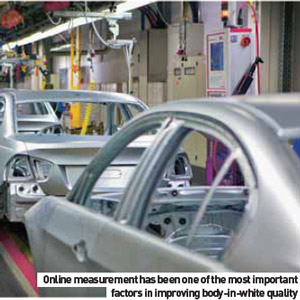 Michel Gornet sees the spread of Renault’s activities as a positive change; its one area where there has been even more change than in the technology used to build cars: “Globalization is probably where we have seen the biggest changes over the past decade. Starting with Brazil, 10 years ago, all areas have been exciting with different challenges in different regions. The Logan has been a very exciting challenge; using the Renault manufacturing system to develop the vehicle, adapting an ‘idea’ of a car and making it within the target price while maintaining Renault quality standards.”
Michel Gornet sees the spread of Renault’s activities as a positive change; its one area where there has been even more change than in the technology used to build cars: “Globalization is probably where we have seen the biggest changes over the past decade. Starting with Brazil, 10 years ago, all areas have been exciting with different challenges in different regions. The Logan has been a very exciting challenge; using the Renault manufacturing system to develop the vehicle, adapting an ‘idea’ of a car and making it within the target price while maintaining Renault quality standards.”
Toyota’s Total Production System has acquired near-mythic status in the industry. Didier Leroy sees the company’s core strength as being able to adapt to market conditions around the world: “At Toyota we have seen large and rapid growth over the last 10 years, but we have maintained the key values of the company based on what we call the Toyota Way – of course, TPS has been benchmarked every where in the world, making us confident in our methods. The current big change in the market pushes us to adjust our business model to the new conditions; we will do it very quickly by coming back to the spirit of the origin of our company.”
For all carmakers working on firstgeneration vehicles (not run-out or reverse-engineered models), one of the biggest changes that manufacturing has had to manage over the last 10 years is the product migration to lower-mass architectures. Lower-mass designs are an enabler to better fuel economy, performance and the use of green technology, such as hybrids. The use of aluminium and high-strength steels are much more mainstream in today's vehicle designs, resulting in more forming and joining challenges than experienced on previous product development cycles. Gary Cowger gives the GM view: “Introduction of high-strength steels allows Product Engineering to improve performance of strength-dominated parts at lower mass and cost by reducing material gauge. The manufacturing challenges that are associated with the use of high-strength steels, most notably dimensional control and springback, are managed through multiple die iterations.”
Joseph Hinrichs cites tooling as an area where he has seen body-in-white technology move on the most for Ford:
“One of the most significant advances has been the shift from hard tooling to fully-flexible assembly systems which can handle multiple platforms/ architectures. The tooling systems have taken advantage of advances in robot and weld control technology that have greater reliability and quality performance at lower cost. Another significant advance is the use of virtual manufacturing technology that enables simultaneous engineering of tooling systems during product development to improve cost and quality performance.”
 Starting December 2000, Hinrichs was Plant Manager of the Van Dyke Transmission Plant in Sterling Heights, MI, moving to become Executive Director, Global Material Planning & Logistics in April 2002. He was appointed Director of Manufacturing, North American Vehicle Operations in June 2003 and then moved to become President & CEO, Ford of Canada in January 2005. He returned to Vehicle Operations as Vice President in November 2005, and became Vice President of North America Manufacturing from October 2006 until January 2008 when he was made Group Vice President, Global Manufacturing. He has held his present position as Group Vice President, Global Manufacturing & Labor Affairs since April 2008.
Starting December 2000, Hinrichs was Plant Manager of the Van Dyke Transmission Plant in Sterling Heights, MI, moving to become Executive Director, Global Material Planning & Logistics in April 2002. He was appointed Director of Manufacturing, North American Vehicle Operations in June 2003 and then moved to become President & CEO, Ford of Canada in January 2005. He returned to Vehicle Operations as Vice President in November 2005, and became Vice President of North America Manufacturing from October 2006 until January 2008 when he was made Group Vice President, Global Manufacturing. He has held his present position as Group Vice President, Global Manufacturing & Labor Affairs since April 2008.
So, on a personal level, how has this the last 10 years worked out?
During this decade, I have been very blessed to work with great teams in many parts of the business, culminating with working for Alan Mulally and working with the Ford leadership team, as we work through these challenging times today. From powertrain and vehicle manufacturing, to MP&L, to Marketing & Sales, to labour affairs - lots of challenges and many successes shared with a great team at Ford.
How has virtual manufacturing and visualisation helped you?
We have made significant strides in concern prevention through virtual manufacturing. We build the entire vehicle in the “virtual world” before we build the first physical part. This includes simulating operator ergonomics as well as product and process feasibility. This has made a major impact on our initial quality and our ability to deliver products to the marketplace faster than ever.
How have you found the rise in automation and IT?
The real challenge rests in establishing the appropriate level of automation - striving for max value added automation - delivering quality performance while enabling flexibility. Finding the appropriate level of automation has made the job easier when one integrates IT/Component traceability. “You have to very much trust the team. We have incredibly talented engineers and managers. I wouldn’t pretend to understand all the technologies to the level that they do.
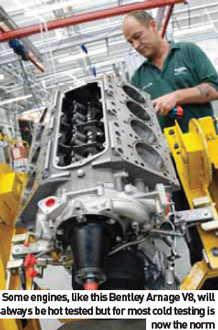 A second challenge faced by manufacturing in body-in-white is the increasing demand by customers for improved levels of quality. In many cases, that demand is accompanied by a customer belief that quality is not price recoverable; it is expected, no matter the vehicle price. A case in point would be vehicle fit and finish, particularly gap and flush performance. Renault’s Michel Gornet on the technology advances that have enabled Renault to raise its quality game: “The most significant gains have been made with technologies like laser welding, more ‘two dimensional’ flexibility – enabling different models (bodystyles) on the same lines at the same time, and allowing quicker complete model line changes. Fixtures have also become more streamlined. We are using lighter, less solid metal fixtures, and using more software to create the geometry for manufacturing operations. We have greater accuracy in the stamped parts and as we now use much lighter body parts that do not need as heavyweight fixtures as in the past, and robots are more accurate and stable.
A second challenge faced by manufacturing in body-in-white is the increasing demand by customers for improved levels of quality. In many cases, that demand is accompanied by a customer belief that quality is not price recoverable; it is expected, no matter the vehicle price. A case in point would be vehicle fit and finish, particularly gap and flush performance. Renault’s Michel Gornet on the technology advances that have enabled Renault to raise its quality game: “The most significant gains have been made with technologies like laser welding, more ‘two dimensional’ flexibility – enabling different models (bodystyles) on the same lines at the same time, and allowing quicker complete model line changes. Fixtures have also become more streamlined. We are using lighter, less solid metal fixtures, and using more software to create the geometry for manufacturing operations. We have greater accuracy in the stamped parts and as we now use much lighter body parts that do not need as heavyweight fixtures as in the past, and robots are more accurate and stable.
For Didier Leroy, perhaps typical of Toyota’s reputation for accuracy and quality, measurement and repeatability are key: “For the body-in-white, the most impact has been ‘on-line measurement’, which has improved body accuracy a great deal. New technologies for robots have been also introduced, which have helped achieve higher density, so less space is required for production operations.”
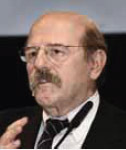 Michel Gornet joined Renault in 1968 at the Billancourt plant’s Powertrain Manufacturing Department. He became head of the BIW/Paint Department at the Flins plant in 1979, then joined the Personnel Department in 1983. Appointed General Manager of the Billancourt plant in 1986, General Manager of the Sandouville plant in 1989, then Senior Vice President, Manufacturing, in 1994. He has been Executive Vice President, Manufacturing and Logistics, and member of the Group Executive Committee (CEG) since January 2005.
Michel Gornet joined Renault in 1968 at the Billancourt plant’s Powertrain Manufacturing Department. He became head of the BIW/Paint Department at the Flins plant in 1979, then joined the Personnel Department in 1983. Appointed General Manager of the Billancourt plant in 1986, General Manager of the Sandouville plant in 1989, then Senior Vice President, Manufacturing, in 1994. He has been Executive Vice President, Manufacturing and Logistics, and member of the Group Executive Committee (CEG) since January 2005.
Where do you feel you have seen the greatest ‘revolution’ in car making in the last decade?
I have seen no great revolutions, but mastering the torque and angle measurement system in fi nal assembly on fasteners, and turn counting, has been a great step forward. And one other important continuing development over the last 10 years, which of course started some time before, has been the electronic control of assembly tools.
Paintshop – does it keep you awake at night?
Ah yes, it is the investment-heavy area! At Renault we have gone to water-borne paint, we got there a little later than some OEMs, but it has made some good savings. And since then we have made very big efforts to improve our performance in environmental protection and cutting energy usage.
Has the move to more automation made your job easier or more complex?
It starts as added complexity, then as one begins to master all the software, you fi nd ‘simplicity’ again. One gets better feedback from it when one understands it all. Maintenance is easier – the improved IT and controls have helped to grow TPM (total predictive maintenance).
How have you found your labour force to have changed and developed over the last 10 years?
I have found operators are much more involved in production improvement, and they are more committed than 10 years ago, I have seen higher levels of technical education, of course particularly in the west and generally globally in other developed areas.
Increasing automation and accuracy in machining operations, hard turning, laser welding of gears and shafts and greater reliance on cold test have been some of the trends that have emerged over the decade. Gary Cowger: “For our powertrain operations, the largest change has been our CNC machining centers being transitioned from prototyped to production machines.
This gives us greater ability for lean/ agile/flexible operations. The advanced machine controls allow us to now ‘live in microns’ and deliver with precision flexible, cost-effective engines and transmissions.”
Ford’s powertrain operations has produced many award-winning engines over the past decade and production techniques have contributed strongly to the quality and ‘manufacturability’ of these powerplants. Joseph Hinrichs puts this down to several factors: “The movement to minimal coolant machining, the changes in the use of inline and cold tests as compared to hot tests for engines, the further development and deployment of CNC equipment, and the flexibility of both engine/transmission architectures and the processes that build them – these are the major developments in powertrain manufacturing over the last decade. The use of upfront tools (virtual and rapid prototype, for example) is also having a major impact: to drive standardization and simplification in the future.”
Looking back at AMS articles from 1999, several engine plant managers were proudly displaying their 100% hot test programmes – running every new motor to full temperature, some even routinely running power tests.
Equipment development, machining quality and environmental considerations have pushed most OEMs down the cold test route and even added to the efficacy of the tests. Gary Cowger: “We can check many parameters like vibration and temperature and we can do it without running on fuel or natural gas. The electronics can map a signature of an engine and map the parameters of what is good in the engine or what has changed.”
For Joseph Hinrichs, one of the most significant advances in powertrain has been: “Elimination of 100% hot test of engines. The standard today is the first time an engine fires up is at the end of vehicle final assembly prior to the rolls test. This was unthinkable only a few years ago. Another factor has been the move from end-of-line to in-process testing, including cold test, resulting in significant improvement in right first time quality. The advances we have seen in powertrain technology could not have been managed/qualified with the historical hot test approach.”
Michel Gornet sees gains in all areas:
“We have put more flexibility into powertrain: a modern cylinder head line can work on several different heads using pallets and machining centres. Powertrain assembly is more automated than a decade ago, but
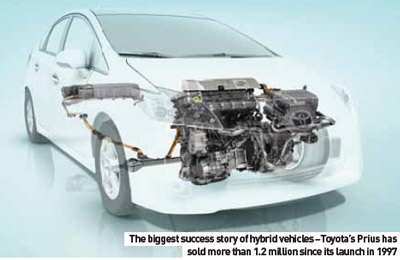 I believe it has reached its peak of automation. On engine testing: “We did only sample hot test in past, now when we start production of an engine, we do 100% hot testing, then we slowly go to sample testing as we ramp up. As for cold testing: I think it is necessary to do 100% on full production.”
I believe it has reached its peak of automation. On engine testing: “We did only sample hot test in past, now when we start production of an engine, we do 100% hot testing, then we slowly go to sample testing as we ramp up. As for cold testing: I think it is necessary to do 100% on full production.”
Hybrid and electric vehicles are making the news now, where turbochargers and direct injection were the ‘sexy’ technologies 10 years ago.
Toyota have been the biggest marketers of hybrid technology and this has influenced Didier Leroy’s outlook in this area: “For me, the biggest advances in powertrain have been the development of hybrid technology with the strong leadership of Toyota.”
He differs from many on testing: “On hot and cold testing, at Toyota both are applied, but we always give priority to hot test, which is still better than cold engine test.”
Nitin Rajurkar cites laser welding of components as an important advance for Tata: “Laser welding of gears onto shafts has been one of the big advances, it has enabled us to change the design of powertrain assemblies to save metal and thus cost, plus we now have on-line in-process checking, so any problem gets highlighted and dealt with before it goes further down the line.” On testing he is in tune with most modern powertrain engineers: “We have moved to cold testing on all engines; with the new measuring equipment we have, we can reduce hot testing to selected sample hot tests, we now hot test one out of every 20. In the past we hot tested every engine.”
 Didier Leroy joined Toyota Motor Manufacturing France S.A.S. (TMMF) as vice president in charge of manufacturing in 1998. The first French national to join TMMF, he took an active part in setting up the company and constructing the plant. In 2003, he became senior vice president and took charge of the project to change operation at the plant from two to three shifts. In 2005, he was appointed president of TMMF, and in June 2007 he was made a managing officer of Toyota Motor Corporation.
Didier Leroy joined Toyota Motor Manufacturing France S.A.S. (TMMF) as vice president in charge of manufacturing in 1998. The first French national to join TMMF, he took an active part in setting up the company and constructing the plant. In 2003, he became senior vice president and took charge of the project to change operation at the plant from two to three shifts. In 2005, he was appointed president of TMMF, and in June 2007 he was made a managing officer of Toyota Motor Corporation.
What is your take on the level of automation in trim and final assembly?
The way to assemble a car has been simplified and over the decade, we started to introduce more automation. The main improvement thast resulted from this was focusing on quality, and how to feed back any problem to the job stations.
Has the move to more automation made your job easier or more complex?
Of course one of the key criteria for automation is to make the job easier. But the main difficulty has been to maintain the reliability of the new equipment and so the job of maintenance members is more complex.
Flexibility is a phrase that has become increasingly popular; what is your take on the changes we have seen?
With the very fragile market, flexibility and reactivity are key to being successful. But this should not be achieved at the cost of the people working in the company, flexibility should not cost jobs, and we have to clearly explain to everybody in the company why we need it. Flexibility should work hand in hand with strong members’ motivation.
Thinking of your moves within Toyota - do you think that manufacturing guys need to be more agile?
We will have to develop more and more innovative thinking to become more agile and react quickly to the market demand in term of product and volume. We need to become as flexible and adaptable as the machines we use, and the vehicles we build!
From start to finish – paintshop advances
The traditional bugbear of any plant, the paint process has probably benefited from technology developments more than any other in manufacturing. Cartridge systems, bell systems, electrostatic deposition and new materials have all helped to improve vehicle painting times, although it remains a significant bottleneck in the total vehicle making line.
Plant planners and managers alike have also been keen to clean up the process’ ‘dirty’ image, as Ford’s Joseph Hinrichs pointed out: “Paint shops at FMC have been evolving into low cost, high-quality producers that are lean, flexible, fast-to-market and leaders in environmental stewardship.
This has all been accomplished by implementing lean paint shop processes, improved automation technologies, and breakthough paint material formulations. Our paint shops are producing environmental-friendly results by lowering emissions of both VOCs and CO2, improving energyefficiency, and delivering enhanced water conservation. At the same time we have better, more uniform paint quality; bolder, brighter colors; improved chip- and scratch-resistant coatings; and the most durable coating systems in the industry.”
At GM, paint bells and robots have been key to saving space and reducing air flow, leading to lower energy consumption, Gary Cowger: also allows for a reduced width of the spray booth, reducing the volume of air required to control paint overspray, which reduces our ongoing booth utility costs and CO2 footprint as well.
Putting it all together– trim and final assembly
One area where automation has probably peaked in most developed plants is trim and final assembly– real concerns here are quality maintenance, ergonomics, speed, and balancing customization of the product with ease of assembly.
Outsourcing and modularization were common catchphrases of the 1990s, but things have changed since then. Putting pressure onto the supply base to assemble larger and yet larger sections of the vehicle also forced suppliers to take much of the cost burden related to innovation upon themselves, simply to remain competitive. This worked well during boom times; indeed it seemed that suppliers were falling over themselves trying to up their R&D budgets with long-term supply contracts in their sights. In recent years, with the economic downturn causing many smaller (and some larger) suppliers to fold or at least heavily rationalize, OEMs have taken back a lot of responsibility. This has made trim and final more important than ever for carmakers.
While supplier parks are still being built alongside almost every plant in the world, contracts are shorter and more demanding and the enormous investment in the new hybrid and electric powertrain technologies is putting a great strain on many suppliers.
Where trim and final has made great advances though, is in ergonomics and the man-machine interface. Gary Cowger: “Within the General Assembly (GA) trim operations, technology has been implemented with more of a focus on ergonomics and ways to help the production operator. A few examples include the use of height-adjustable skillets to optimize the assembly height of the vehicle for the operator to conduct his operations, and the use of robotics to assist in the loading of difficult or heavy components, e.g. windshield glass or hybrid battery assemblies.
Also, the application of simple, lowcost Automated Guided Cart (AGC) technology allows for a lean, more efficient material delivery and transfer system to transport material to the production lines.”
From vehicle driving control systems to massage seats, even lower midsegment vehicles have increasingly complex electronic architectures, with many more systems that can go wrong – even before the car is completed. Testing and verifying these is a major part of today’s trim and final process. Joseph Hinrichs: “We verify all electronic module functionality, as well as connection and functionality of all electrical content. This is done through a combination of on-board and off-board diagnostic testing of electronic modules and physical current measurement of electrical device function.”
On automation levels in trim and final, Jaguar Land Rover’s Michael Straughan is convinced that the balance between manual and automated operations has been found:
“I think most carmakers would agree that in trim and final assembly, we have probably reached the optimum automation level and of course, we are always more reliant on the person on the line in this area.”
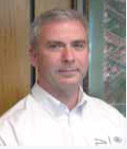 Michael was appointed Operations Director for Jaguar Land Rover Halewood Operations on 1 February, 2009. He returned to Jaguar Land Rover from LDV Group Ltd, where he was Operations Director at their Birmingham site. Straughan initially joined Jaguar Land Rover in 2004 as Freelander 2 Launch Manager and was instrumental in preparing the plant for the introduction of the new Freelander 3. Straughan also held the position of Material, Planning and Logistics Manager at Halewood before joining LDV in 2006. Previously, he held a number of senior manufacturing positions with Nissan UK and Volvo Cars, including Production Director for Volvo’s Uddevalla plant in Sweden.
Michael was appointed Operations Director for Jaguar Land Rover Halewood Operations on 1 February, 2009. He returned to Jaguar Land Rover from LDV Group Ltd, where he was Operations Director at their Birmingham site. Straughan initially joined Jaguar Land Rover in 2004 as Freelander 2 Launch Manager and was instrumental in preparing the plant for the introduction of the new Freelander 3. Straughan also held the position of Material, Planning and Logistics Manager at Halewood before joining LDV in 2006. Previously, he held a number of senior manufacturing positions with Nissan UK and Volvo Cars, including Production Director for Volvo’s Uddevalla plant in Sweden.
Jaguar and Land Rover are now occupying the same quality ‘high ground’ in your facilities, making premium brands. Are you now fl exible enough to make the Tata Nano on the same lines?
We could do that as well! Premium is an interesting word as I think premium can only be used to denote a brand rather than tthe manufacturing processes. Certainly in my time at Volvo, there was a lot of discussion about how you make a premium manufacturing process. If you break that down, there is really only one good way to make a car – whether it is a Tata Nano or a Range Rover, there is only one way to do it. Maybe the materials are slightly cheaper going into the volume cars but the processes themselves are very similar.
Modularization – how has this developed over the 10 years?
I think we have seen the peak of modules coming from outside, we have not used the module system as much in Jaguar Land Rover as many other car companies and from what I see at other car companies, there is less emphasis on this now. On XType we have some more modules but over all what we have found is that the OEM is now very efficient on module assembly and, in a make versus buy study, it appears to be better to make more in-house than it is to buy-in modules.
When did you last work on the shop floor?
The last time I did that was when I was at Volvo, I think! But I do encourage all our managers and engineers to get hands-on, on the line, whenever they can.
Management, labour and the unions
One does not have to look far to see the effects of the downturn in labour numbers and contracts; layoffs, plant closures, cutting back on pensions and benefits have all been forced upon carmakers and their employees. Some OEMs have reacted earlier than others, but all have had to share the pain with their workforces – and the unions that represent them.
Gary Cowger: “Ten years ago, in 1998, GM went through a significant event in the US with a major labor disruption at the Flint Metal Fab Plant that disrupted production throughout the corporation and cost GM millions in sales and lost market share. It also resulted in a loss of public image to customers and to the world at large. Things had to change – for both management and union.
“As a result of this event, the manufacturing and labor relations organizations were merged and a new era began with respect to the relationship between the union and management at GM. Transplants were invading the US, but we were still internally focused and adversarial in our relationship with the UAW in 1998.
“Now, ten years later, we are focused on our external competition and closing the competitive gap – across the board (operationally, and in labor costs).”
Ford went through a period of enthusiastic acquisition in the 1990s, it had $20 billion dollars in a ‘war chest’ and bought up several brands, while purchasing large chunks of shares in others. It has recently had to divest some of these, but has acted ahead of some of its competitors in terms of the management of its global workforce.
Training is key to Joseph Hinrichs’ labour strategies: “Training demands have escalated significantly. It is now typical for an hourly operator to be responsible for a CNC machining cell, including CMM checks, tool changes and preventative maintenance activities. The skilled trades are now more of a knowledge/information technology trade, with vastly reduced mechanical requirements.”
Didier Leroy adds that Toyota continues to nurture its employees and develop their skills: “Many companies focused on labour cost for cost reduction.....but labour cost is not everything!
“Of course we improve productivity, but with the support of our members.
Our members are our best asset, and we invest a lot in their development, improving skills, competencies and motivation.”
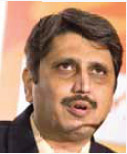 Nitin Rajurkar has more than 27 years of experience in the automobile industry, with specialisation in manufacturing engineering. He heads the new project facility planning (ME) activities for Tata Motors Passenger Cars Unit. Rajurkar is a pioneer in digital manufacturing initiatives in India and holds credit for several digital project achievements.
Nitin Rajurkar has more than 27 years of experience in the automobile industry, with specialisation in manufacturing engineering. He heads the new project facility planning (ME) activities for Tata Motors Passenger Cars Unit. Rajurkar is a pioneer in digital manufacturing initiatives in India and holds credit for several digital project achievements.
At Tata, and indeed in India as a whole, you have seen some of the biggest changes in demand over the last 10 years – how have you responded?
In the last ten years the major change at Tata, in response to damned, has been the introduction of flexibility and automation. Demand for vehicles was very unpredictable 10 years ago. Then, the lines at Tata were very much individual manual lines, with almost no automation. Now we have great flexibility in being able to respond to fluctuating demand and also to accommodate different models and platforms. Our production cells were inflexible – in fact they were not really cells as we know them now.
So, plant layout and equipment choices were part of these changes?
Yes, in the bodyshop they were totally inflexible fixed stations on the line with the welding equipment very solidly installed, with no thought of making it adaptable to any future vehicle programmes or even changes to the existing vehicle model lines. We had to change that, and we did. In some ways we were lucky to have been changing the plants long after western companies have already done this kind of updating work, and we could learn from what we saw in Europe and the US.
If you had a dream budget, which area would you like to improve most?
Paintshop is always the area where I would like to make more investment – we have reconditioned some used paintshop equipment which works well but a new one would be the best!
Tough times ahead, tough solutions
As we have noted, the past decade has possibly seen more change than the previous 90 years of mass production in automotive and the industry is now at a crossroads of change. New vehicles, powertrains, looking for lighter weight, greater efficiency and lower emissions while satisfying an increasingly sophisticated consumer who is not able to pay the premium prices of the past.
Who wouldn’t want a job in automotive? Or as Ford’s Joseph Hinrichs puts it: “Yes, the solutions of the future will have to draw on nontraditional skills and knowledge. This is an industry going through more change globally than we've seen in quite some time. It's a wild ride, but one that can and should be enjoyed.”





























